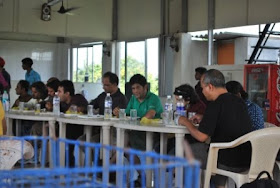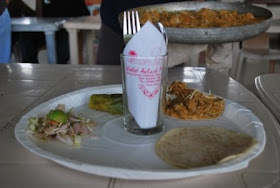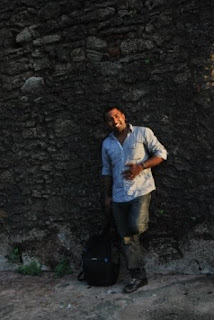
There are few magazines that make you to read cover to cover. Philosopher Francis Bacon says when he talks about books, ‘some are to be tasted, some are to be swallowed and some are to be chewed and digested.’ It is applicable in the case of art magazines also. ‘Some of them are to be happily put into refrigerators for an imagined future use and later trashed along with other rotten stuff,’ Bacon would have added had he been living today.
Though a keen reader of art magazines of all complexions, I should confess that the kind of art writing promoted by several of these magazines has made me to flip the pages as fast as I could.
But here is a magazine, the four issues old Art Connect+, published by the IFA, Bangalore and edited by Anjum Hasan that makes you to read it as if you were reading a thriller.
IFA has been sending me the complimentary copies since Art Connect was launched in 2008. I would say, the latest issue is the best out of the four.
A translated chapter from Marathi novelist Santa Gokhale’s ‘Tya Varshi’ (In that Time) sets the tone of this particular issue. Translated by the author herself, the plot of the novel unveils in the year 2004. There are classical singers and artists who are affected by the national pogroms and global wars live, suffer, triumph and die in the novel. In the particular chapter available to us, Santa Gokhale shows us the predicament of a classical singer who wants to improvise her classical training to the needs of the contemporary times. But her Guruji disowns her for her ‘deviation’ from the tradition.
The conflict between tradition and contemporaneity is what Santa Gokhale wants to narrate and as the former art critic of Times of India, she knows the art scene first hand. She makes parallel narratives of two streams; of classical music and contemporary art to explain her case. Though we are not privileged to read the whole novel, as it is in Marathi, the present piece of translation would help us to understand the intensity of the theme.
Quite naturally, the same conflict comes up again for discussion in a beautiful conversation between the modern dancer Astad Deboo and the theatre and film director Sunil Shanbag. Deboo speaks of the spaces that he uses or discovers when he is invited to perform. Through drawing a parallel between one of the classical dance forms, Bharatnatyam, and the kind of dance he performs, Deboo says how effective the classical forms would have been had the performers dared to use the given space a bit more consciously. For the one should step out of the norms, without discarding or disrespecting them.
‘In the World of Marafat’, writer and researcher Surojit Sen travels through the world of Marafat singers. They are like Sufis, trying to link the individual soul and the eternal soul through the worship of body and the songs in praise of it. Sen traces the history of Marafat singers and narrates the personal lives of a few Marafat singers and through which he brings out the social conflicts that they need to go through in their personal lives.
‘Disappearing Professions in Urban India’ is an essay photo essay combination between Oriole Henry and Clair Arni. Oriole and Clair travel through the innards of Kolkata and look for the traces of the remaining traditional small scale industries like shoe making, wig making, perfumeries and so on. The crisp text and the revealing and poignant photographs make this essay palatable to both eyes and brain.
‘The Story of a Story Teller- Jogesh Chandra Bose’ is a life sketch of the first radio story teller in Kolkata. Written by historian Indira Biswas, this essay tells us the social situation in which radio broadcasting was done during the third decade of the last century. The total radio population during 1930s, put Bombay and Calcutta together, was just above ten thousand. In that context to become a popular broadcaster was a seriously great feat. Jogesh Chandra Bose, a forty year old lawyer did it.
Jogesh Bose modeled his program on one of the children’s program in BBC and assumed the role of an imaginary grandfather, ‘Galpadada’. He used to tell stories and interesting anecdotes. The popularity of the show grew and it became a regular feature in CRS (Calcutta Radio Service). He became so popular that publication of a magazine followed. When the radio station was about to discontinue broadcasting thanks to financial problems, children and grown up in Calcutta wrote thousands of letters showing concern for the future of Galpadada.
Janaki Abraham’s ‘Who has Photographs? A Journey through the Homes in Talassery’ is a wonderful piece of research narrative. By going through the personal and professional photographs taken and preserved by the Tiyya families in the North Kerala, Janaki Abraham explains the social dynamics of caste, economics, culture and politics played within and without these families. Janaki considers two case studies, one of the circus families and the other of an individual who against all odds learnt to use a camera.
What makes this issue of Art Connect interesting is its first person touch in the narratives. Mostly in the jargon filled academic writings, scholars choose to avoid first person ‘I’. Without compromising the academic depth, all these writers have used ‘I’ to tell us about their research and the stories from their research.
While the jargon infested seminar papers go to Sivakasi to supplement the cracker industry, Art Connect+ will remain in the shelves for long time. And a reader would definitely take this issue out once in a while to have a re-look at it, with a smile.

























































